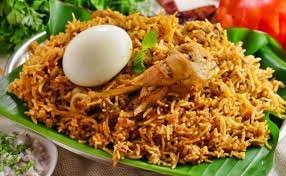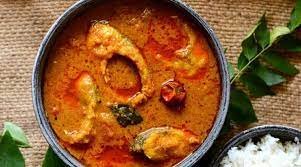The Divine Delights of the Andaman and Nicobar Islands Indian Gastronomy Series by Dr Himanshu Talwar
/Nestled in the sapphire waters of the Bay of Bengal, the Andaman and Nicobar Islands boast breath-taking natural beauty and a rich and diverse food culture. The culinary landscape of these islands is laced with indigenous traditions, cultural influences, and the bounty of the surrounding seas.
The Andaman and Nicobar Islands are home to several indigenous tribes, each with its distinct culinary practices. The Andaman and Nicobar Islands have a history marked by cultural diversity, with influences from various communities such as Bengalis, Tamils, Telugus, and others resulting in a fusion of flavors that adds depth and complexity to the island's gastronomic identity.
On the other hand, Nicobari cuisine features local ingredients like taro, breadfruit, and an emphasis on fresh fish. The Nicobari people's close connection to nature is evident in their culinary practices, creating a culinary experience that is both rooted in tradition and intimately tied to the island's ecosystem.
The islands are full of different spices that give a special taste to each dish. Turmeric, coriander, cumin, and mustard seeds come together to create a lively mix of flavors. Local herbs enhance the aroma, making the food here distinct. Coconut is a popular ingredient. Dishes incorporating coconut feature a fusion of its smooth texture with indigenous spices which gives it a divine flavor. It also shows that the cuisine of the islands doesn't solely rely on spices but also on the thoughtful utilization of natural resources.
Here's a list of some infamous foods from the Andaman and Nicobar Islands-
· Fish Curry and Rice (Macher Jhol Bhat): Fish curry and rice is a staple dish in the Andaman and Nicobar Islands. The fish curry is creamy and zesty, with a balance of spices and the subtle sweetness of coconut milk. Fresh fish, often caught from the surrounding seas, is tender and absorbs the flavors of the curry, resulting in a rich and satisfying dish which is typically served with steamed rice. It's like comfort food with a coastal touch, a way of celebrating the sea's kindness.
· Andamanese Chicken Curry: This indigenous dish is tantalizing and mildly spicy, with layers of flavor from the spices and coconut milk. The chicken is juicy and tender, and the curry has a creamy texture that pairs well with steamed rice or bread. This dish is unique, showing traditions that have lasted a long time, giving you a taste of the islands' heart. Lighthouse Residency in Port Blair is renowned for its Andamanese chicken curry.
· Nicobari Fish Biryani: It is a flavor-packed and aromatic dish made with layers of spiced rice and marinated fish. Rice is infused with flavourful spices and unlike traditional biryani, it uses fish as protein instead of chicken or beef. The moist and tender fish makes it a delectable meal.
· Andamanese Bamboo Shoot Curry: Bamboo shoots are a common ingredient in Andamanese cuisine. The Andamanese bamboo shoot curry is earthy and slightly tangy, with a hint of spiciness from the chili powder. The bamboo shoots have a firm texture, and the curry pairs well with steamed rice or bread.
Coconut Prawn Curry: It is velvety and delicious, with a delicate sweetness from the coconut milk. The prawns are tender and succulent, and the curry has a rich and aroma-filled flavor that is perfect with steamed rice or bread.
Andamanese and Nicobari meals may seem simple, but they hold a rich tradition. The food culture of the Andaman and Nicobar Islands goes beyond just enjoying different foods; it's like taking a trip through their history, nature, and community. For tourists, it is a unique food adventure from the tangy chicken curry cooked in tamarind to the sweet coconut-infused dessert. The use of traditional methods passed down from the locals and the mix of modern flavors makes every dish special.
Author - Dr Himanshu Talwar is an industry veteran with various articles, columns, travelogues, and write-ups published specifically on Tourism, Hospitality, and Aviation to his credit











